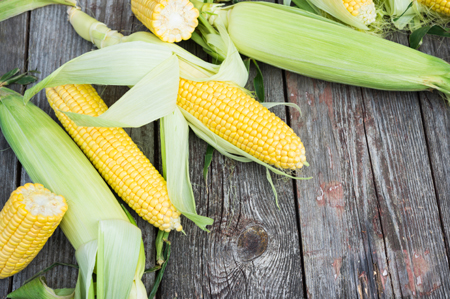 (AgWeek) – Hot, dry weather occurring during corn pollination and fertilization may decrease yields by as much as 8 percent per day, explained Jonathan Kleinjan, SDSU Extension Crop Production Associate.
(AgWeek) – Hot, dry weather occurring during corn pollination and fertilization may decrease yields by as much as 8 percent per day, explained Jonathan Kleinjan, SDSU Extension Crop Production Associate.
“Yields may be reduced at any point in the growing season when water usage exceeds supply,” Kleinjan said. “However, corn is most susceptible to stress during pollination and fertilization, with daily potential yield losses of 3 to 8 percent.”
He explained that this period actually begins about two weeks prior to silk emergence, with a potential loss of up to 4 percent per day. “During silking and pollen shed, the losses can be as high as 8 percent per day, depending on the severity of the stress. In the two weeks following silking, losses can be as high as 6 percent a day if the stress continues.”
Pollination 101
In corn, pollination is the process of conveying the pollen from the tassel to the ear silks. The germination of pollen grains on the silks results in a pollen tube that transfers genetic material to the respective ovules on the ear. The fertilized ovule will then become a kernel of corn.
Drought and heat stress may cause problems with this process by 1) slowing silk emergence while accelerating pollen shed, 2) desiccating silks to the point where they are no longer viable, and 3) killing pollen directly.
“All of these issues may cause reduced kernel set or even a blank ear in extreme cases,” Kleinjan said.
Biggest Concern? Lack of Moisture
High temperatures during pollination are not as big of a problem as lack of moisture, Kleinjan explained.
“Pollen shed occurs primarily in the morning, when temperatures are relatively cool and the pollination process occurs over an extended period of time, with fresh pollen available each morning,” Kleinjan said. “In addition, one corn plant can provide enough pollen to fertilize 10 other plants, which helps provide a natural buffer against stressful conditions.”
Corn can naturally withstand relatively high temperatures. However, the most potential for damage exists when high temperatures are combined with drought stress.
“Substantial losses can still occur during the early kernel development and grain fill stages, with losses of up to 5 percent per day as long as the stress remains. This may be due to aborted kernels and/or poor kernel development,” Keinjan said.
While growers have no control over the weather, Kleinjan said producers can manage for potential drought stress by using practices that conserve soil moisture and planting hybrids with a good overall stress tolerance.
“In some cases, planting early maturing hybrids may allow pollination and early kernel development to take place prior to heat and drought conditions,” he said.




